《JUDICIAL SETTLEMENT OF INTERNATIONAL DISPUTES》
| 作者 | EDWARD MCWHINNEY 编者 |
|---|---|
| 出版 | MARTINUS NIJHOFF PUBLISHERS |
| 参考页数 | 104 |
| 出版时间 | 1991(求助前请核对) 目录预览 |
| ISBN号 | 无 — 求助条款 |
| PDF编号 | 818025708(仅供预览,未存储实际文件) |
| 求助格式 | 扫描PDF(若分多册发行,每次仅能受理1册) |

Chapter Ⅰ. Contemporary Conceptions of the Role of International Judicial Settlement1
1. Changing national positions on third party, (and especially Court-based) disputes-settlement1
2. Ethnocentricity of "classical" international law institutions and processes like judicial settlement5
3. The influence of evolving national constitutional institutions and processes upon international judicial settlement8
Chapter Ⅱ. The Contemporary International Judicial Process. Law and Logic, and the"Law"/"TPolitics" Dichotomy16
1. Judicial Positivism and the limits of legal logic16
2. Competing theories of judicial interpretation. The judicial activism/judicial self-restraint continuum23
3. Preliminary and Merits jurisdiction27
4. Advisory Opinion jurisdiction29
5. Preliminary and Merits jurisdiction revisited33
6. The "law"/"politics" dichotomy, and the "political questions" exception to jurisdiction37
7. The Rules of Procedure, and the creative role of Court practice in their development46
Chapter Ⅲ. The Jurisdiction of the Full Court of the International Court, and the Special Chambers Gloss to Jurisdiction56
1. Compulsory jurisdiction under Article 36(2) of the Court Statute56
2. On "regionalism",and on an alleged "regional" bias in the Court's decisions62
3. The contemporary, Special Chambers gloss to Court jurisdiction73
Chapter Ⅳ. The Contemporary International Court as Independent, and as Representative Tribunal91
1. Judicial independence, and judicial "interest"91
2. Judicial representation: the nomination system for the International Court95
3. Elections to the International Court: changing trends in "regional" representation on the Court101
4."Regional" idiosyncrasies or gaps in the representative character of the International Court today106
5. On "politics" in the Court elections, and current, alleged "regional" biases in Court representation114
Chapter Ⅴ. A Contemporary, Operational Approach to Court Jurisdiction and Justiciability122
1. The new popularity of the International Court122
2. The "internationalising" of the institution of judicial settlement123
3. The "internationalising" of the International Court and its judges129
4. The International Court as sui generis institution133
5. The Court and "political questions"134
6. Operational indices as to justiciability in contemporary international law problem-situations137
a. The issue of timing137
b. The issue of fact-finding139
c. "Judge and Company": the issue of a constitutional separation-of-powers142
7. The new constitutional legitimacy of the International Court and of judicial law-making147
Conclusion: New Agenda, and New Client-States for the International Court147
Table of Principal Cases160
Appendices: Documents162
A. Covenant of the League of Nations. (1920),(Articles 12-15, Article 19)162
B. Charter of the United Nations. (1945),(Chapter XIV. Articles 92-96)165
C. Statute of the International Court of Justice167
D. U.N. General Assembly Resolution 44/23, 9 January 1990("United Nations Decade of International Law")184
Index186
1991《JUDICIAL SETTLEMENT OF INTERNATIONAL DISPUTES》由于是年代较久的资料都绝版了,几乎不可能购买到实物。如果大家为了学习确实需要,可向博主求助其电子版PDF文件(由EDWARD MCWHINNEY 1991 MARTINUS NIJHOFF PUBLISHERS 出版的版本) 。对合法合规的求助,我会当即受理并将下载地址发送给你。
高度相关资料
-
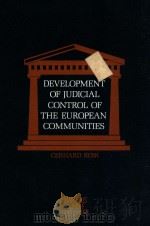
- DEVELOPMENT OF JUDICIAL CONTROL OF THE EUROPEAN COMMUNITIES
- 1981 MARTINUS NIJHOFF PUBLISHERS
-

- INTERNATIONAL DISPUTES THE POLITICAL ASPECTS
- 1972 EUROPA PUBLICATIONS
-

- INTERNATIONAL DISPUTES THE POLITICAL ASPECTS
- 1971 EUROPA PUBLICATIONS
-

- INTERNATIONALISM
- 1986 GREENHAVEN PRESS
-

- CHINA AND INTERNATIONAL LAW:THE BOUNDARY DISPUTES
- 1990 PRAEGER PUBLISHERS
-

- The Law Relating to International Commercial Disputes Second Edition
- 1998 Lloyd's of London Press
-
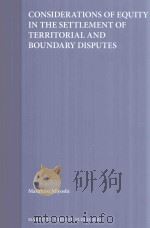
- Considerations of Equity in the Settlement of Territorial and Boundary Disputes
- 1993 Martinus Nijhoff Publishers
-
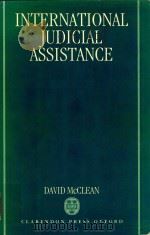
- International Judicial Assistance
- 1992 Clarendon Press Oxford
-
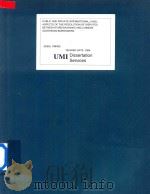
- Public and Private International Laws Aspects of the Resolution of Disputes Between Foreign Banks An
- 1998 UMI Dissertation Services
-

- International Dispute Settlement
- 1984 Sweet & Maxwell
-
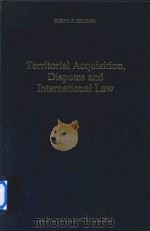
- Territorial Acquisition Disputes and International Law
- 1997 Martinus Nijhoff Publishers
-
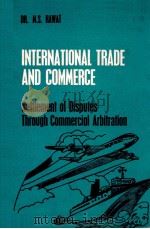
- INTERNATIONAL TRADE AND COMMERCE SETTLEMENT OF DISPUTES THROUGH COMMERCIAL ARBITRATION
- 1985 DEEP & DEEP PUBLICATIONS
-

- LEGAL INSTITUTIONS THE DEVELOPMENT OF DISPUTE SETTLEMENT
- 1984 BUTTERWORTHS
提示:百度云已更名为百度网盘(百度盘),天翼云盘、微盘下载地址……暂未提供。➥ PDF文字可复制化或转WORD

